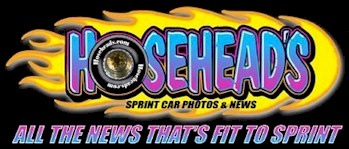|
Walt James’ name will be indelibly inscribed in the annals of West Coast sprint car racing not so much for his driving, but for his leadership and a devotion to the sport he loved.
He’s gone now, having passed away on September 9th at his Acton, Calif., home. He was 86.
But it’s his accomplishments as president-organizer for 25 years of the California Racing Association and the furtherance of Western Racing Association’s vintage racing that will be remembered most.
Aboard a grader, he personally carved out a three-eighths of a mile banked track, grandly identified as Walt James Speedway at Willow Springs.
In 1950, when James took over as CRA president, there were over 300 cars running eight to nine races a week. During his tenure at CRA, he stressed safety for the betterment of open-wheel racing by proposing the roll bar in 1951 and roll cages in 1968.
By the 1960s, things were in full swing. When Parnelli Jones and Jim Hurtubise invaded the Midwest with two CRA Hank Henry-built sprinters powered by Chevys, the Offys were left in the dust. CRA became the country’s racing hot bed and the road to the Indy 500. Fifteen to 20 CRA graduates were in the field on several occasions at the Brickyard.
Wherever there was a gathering of vintage racecars and veteran drivers, James would be there. He and his wife, Dottie, conducted the annual January reunions at Knott's Berry Farm. Walt was always in the middle of things.
The 15th annual CRA Reunion last January drew 133 people, former drivers, car owners, mechanics, officials, media and racing supporters.
Few knew of his distinguished war record. As a very young officer on a B-17 stationed in England, he was on bombing raids over Germany as lead bombardier/navigator, earning many medals, including the Distinguished Flying Cross and Air Medal of Honor, highest American military decoration for wartime gallantry. He retired as a lieutenant colonel.
After the war, James was involved in all types of racing, running mostly with the newly formed California Roadster Association with future Indianapolis drivers Troy Ruttman, Jack McGrath, Jim Rathmann and Manny Ayula.
He and his brother, Joe, pursued the dirt ovals in hopped-up roadsters, graduates of Muroc’s speed runs. Walt said he was not the driver his brother was, but he says he could talk himself into better rides. Joe, who had been honored as National Sprint Car Rookie of the Year, was killed in a 1952 San Jose race.
James used to joke about the fact he was appointed CRA president when he was recuperating in the hospital from serious injuries in a 1950 highway accident. “They had me pinned down,” he said.
Walt was a passenger in the Clovis, Calif., car crash that took the life of Novi builder Bud Winfield. James suffered near-fatal injuries, including crushed legs just below the hips, crushed chest, punctured chest, punctured lungs and a serious head injury. His family was told he would not survive even if they amputated both legs.
This ended his dreams of Indianapolis, but while he was in the hospital, everyone loved his accent and the once-shy Southern boy became the hospital "DJ.' With six months of pent-up energy, he was able to breathe new life into and resurrect the racing organization.
In 1970, James left CRA to build and manage Indian Dunes Motorcycle Park on Highway 126. With eight motorcycle tracks, a dirt and paved oval, Indian Dunes became known and respected worldwide.
In the 1980s, James and a handful of old-timers “re-incorporated' the once active Western Racing Association and made it into a vintage club, where James again served as president for its first four years.
In his later years, he still ran 20 to 30 times a year up and down the California coast, Nevada and Arizona in an old sprint car. Fittingly, he was inducted into the National Sprint Car Hall of Fame in 1993 and honored as a "Living Legend of Ascot Park.'
***
|
